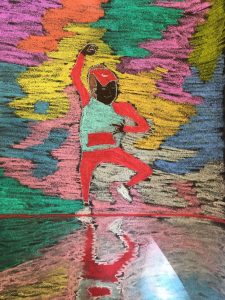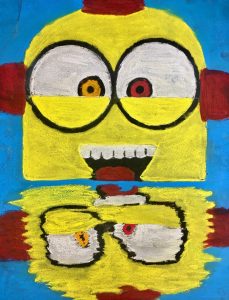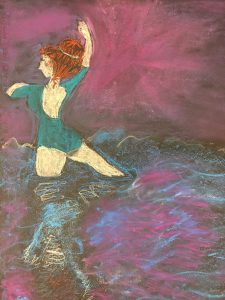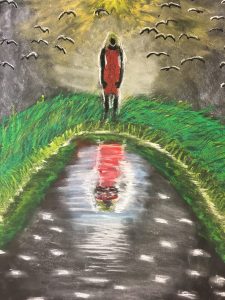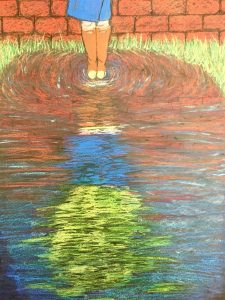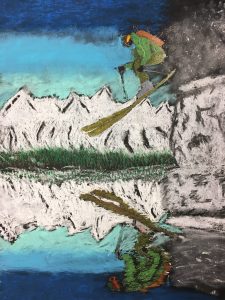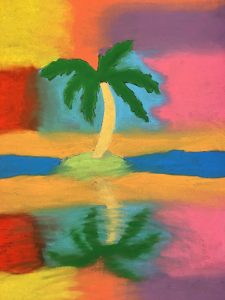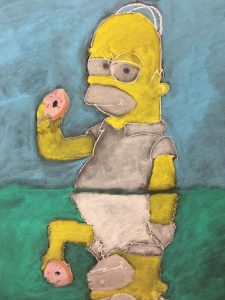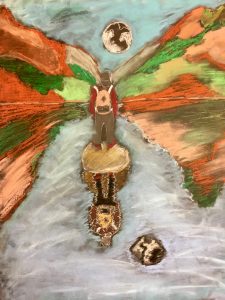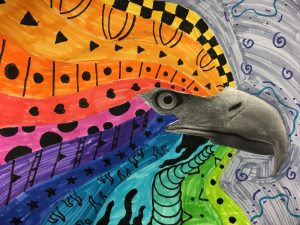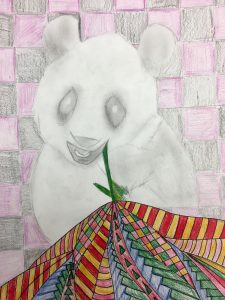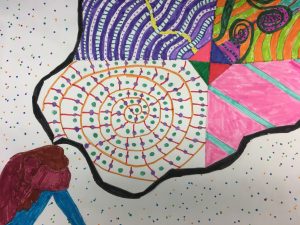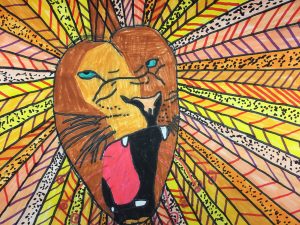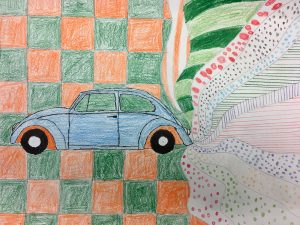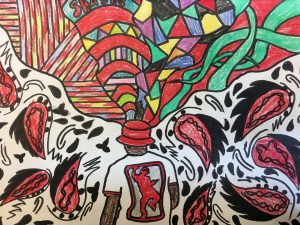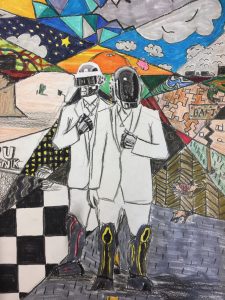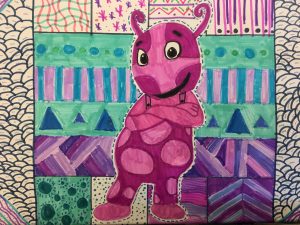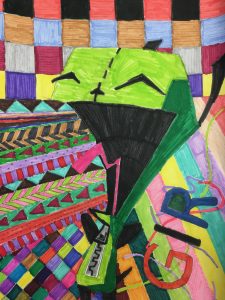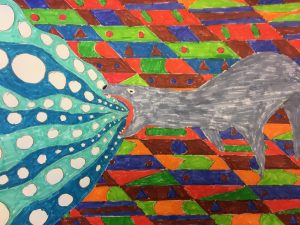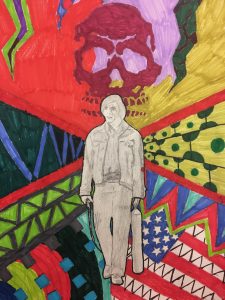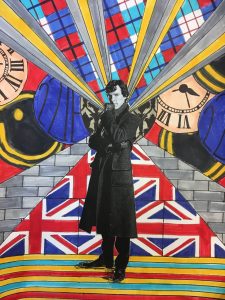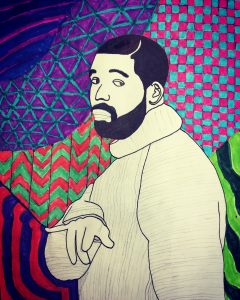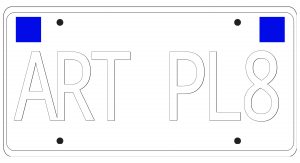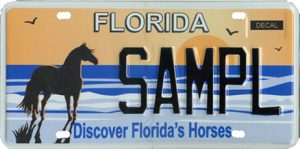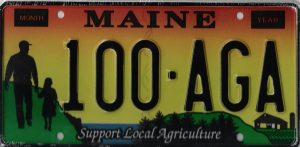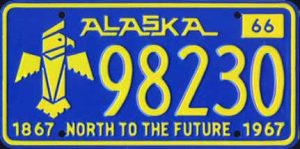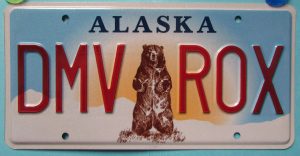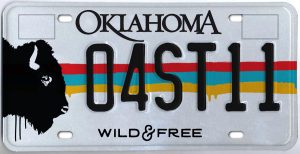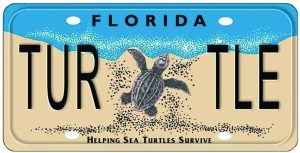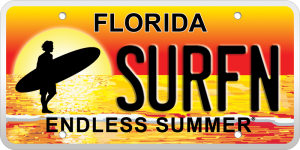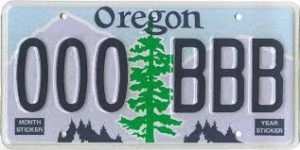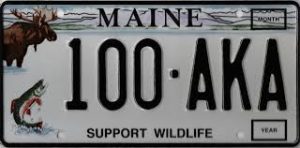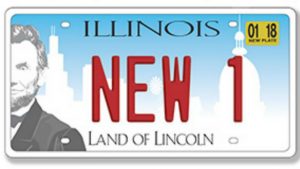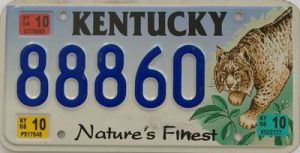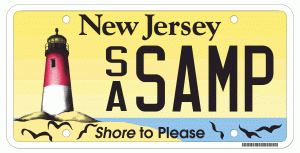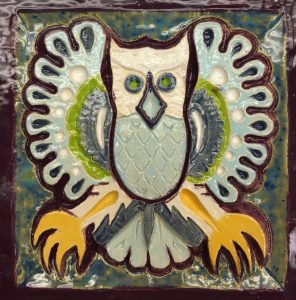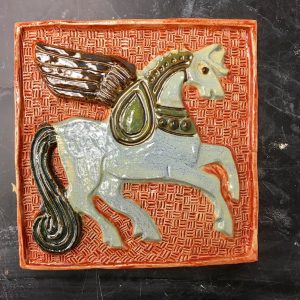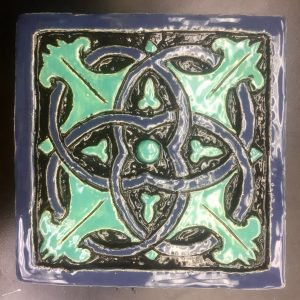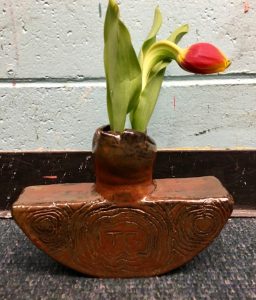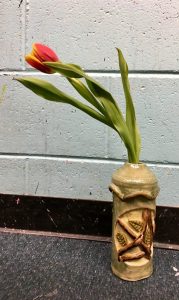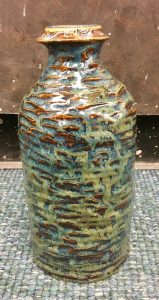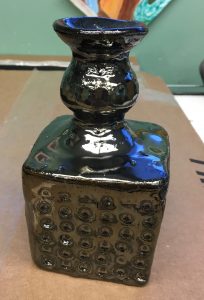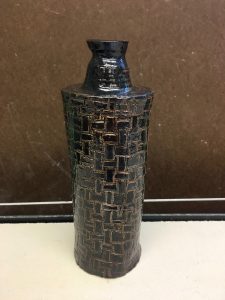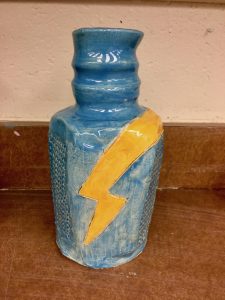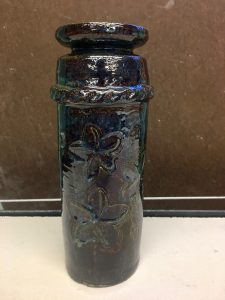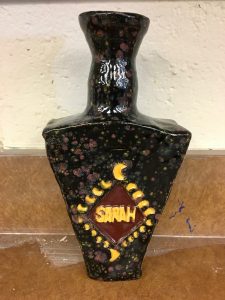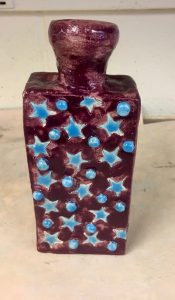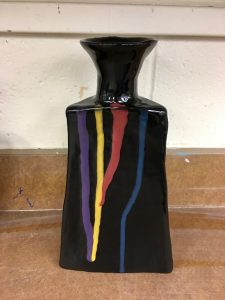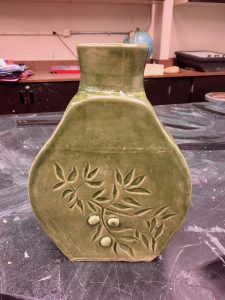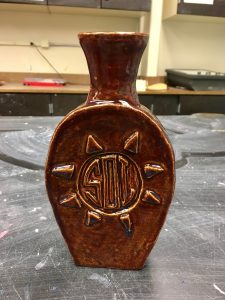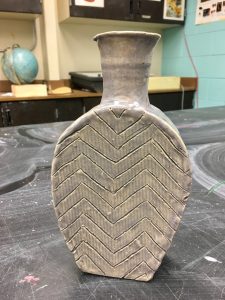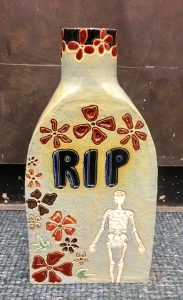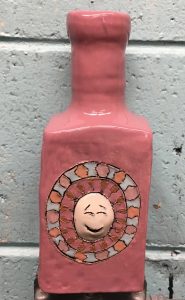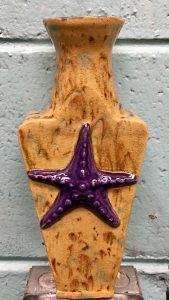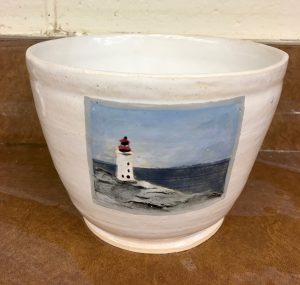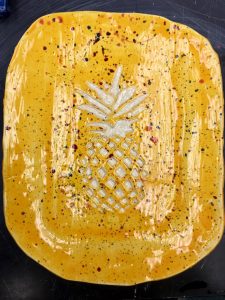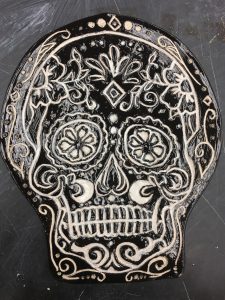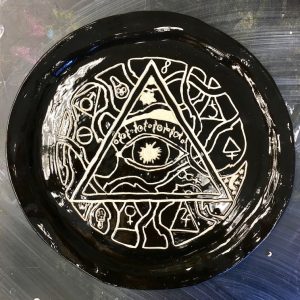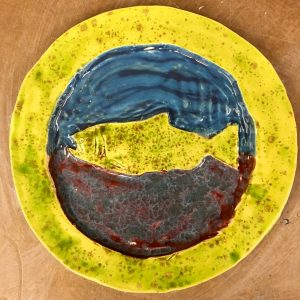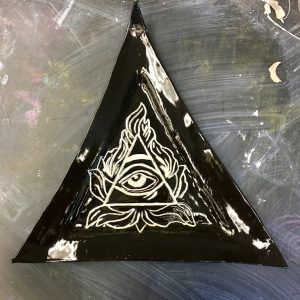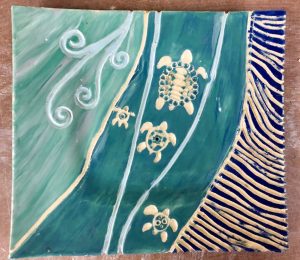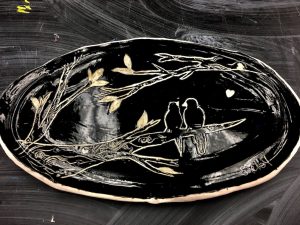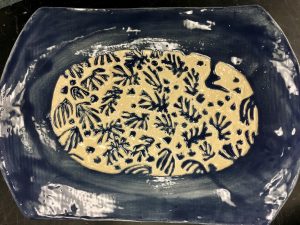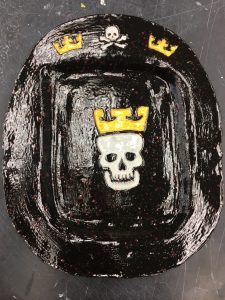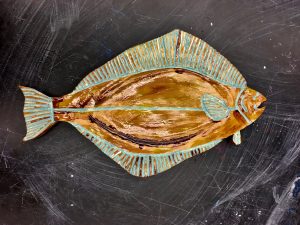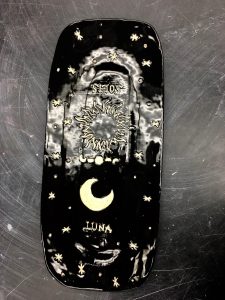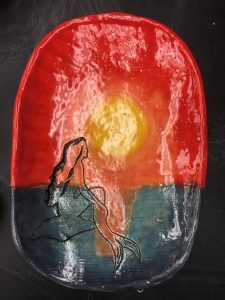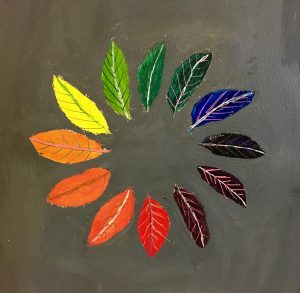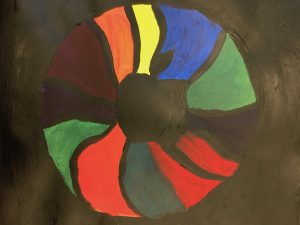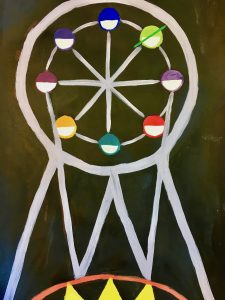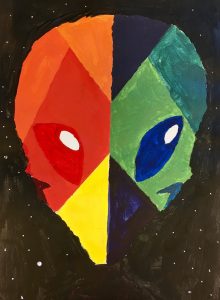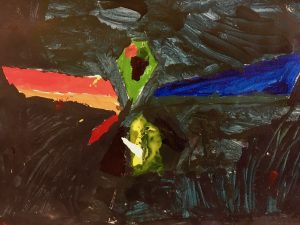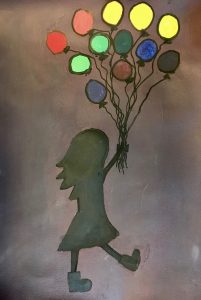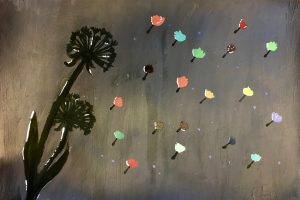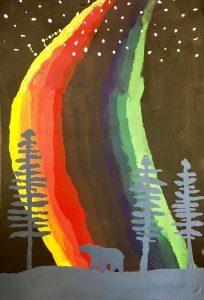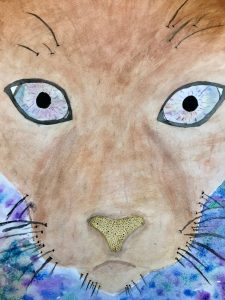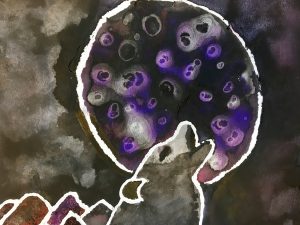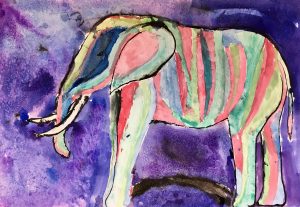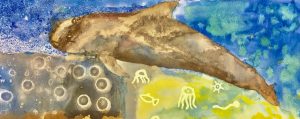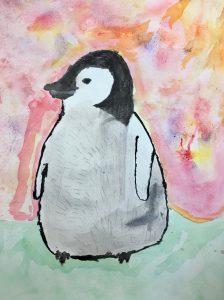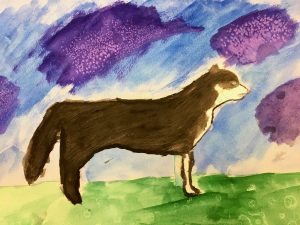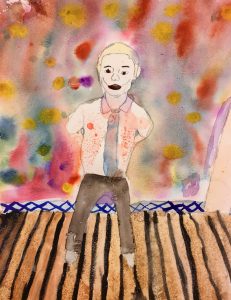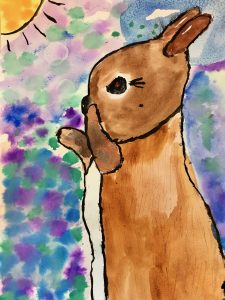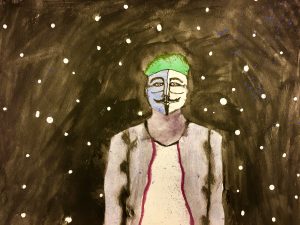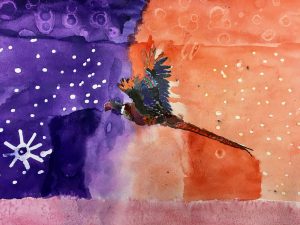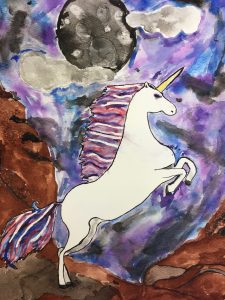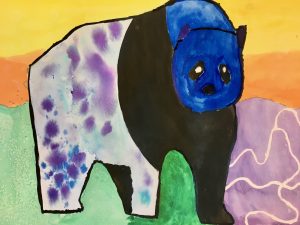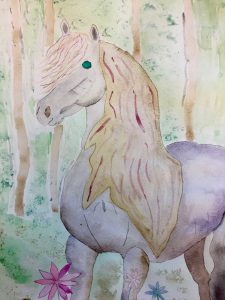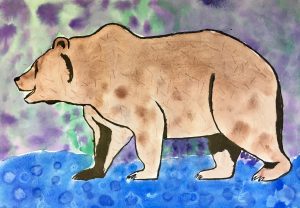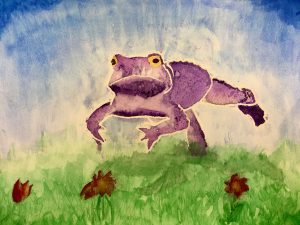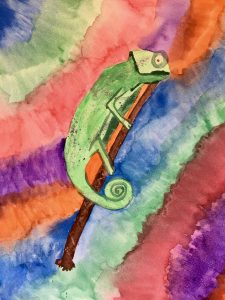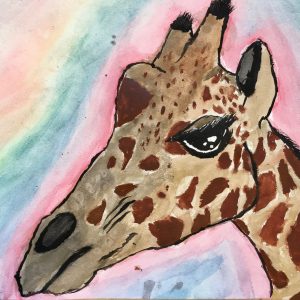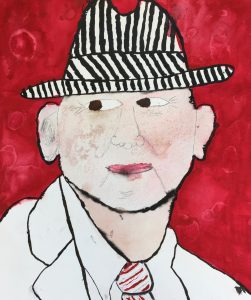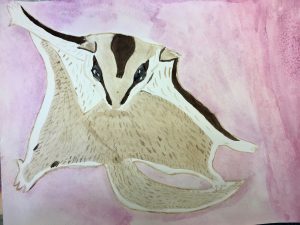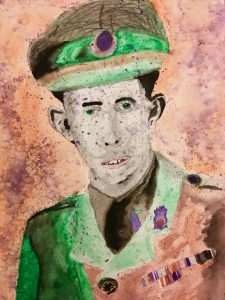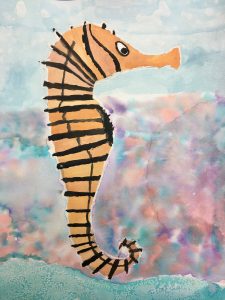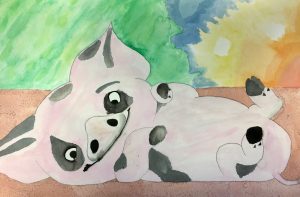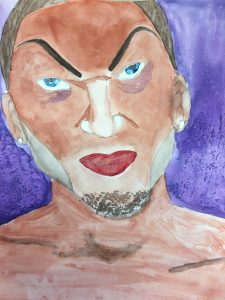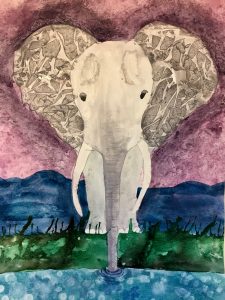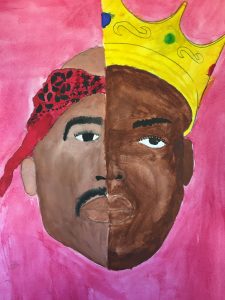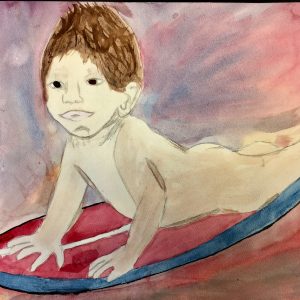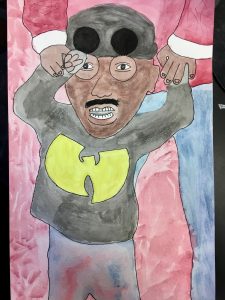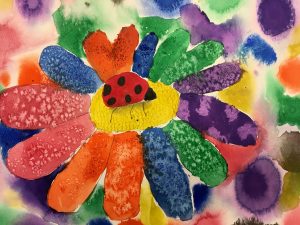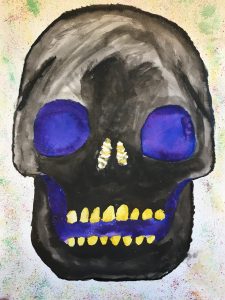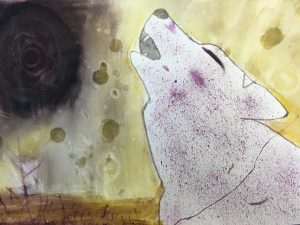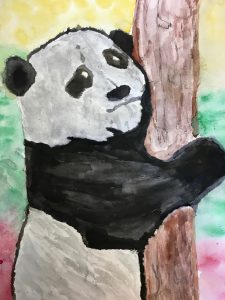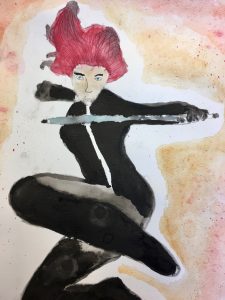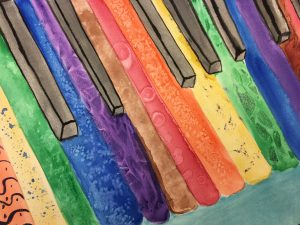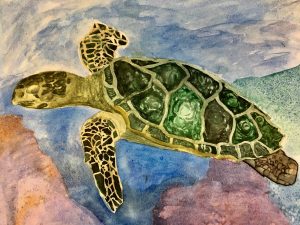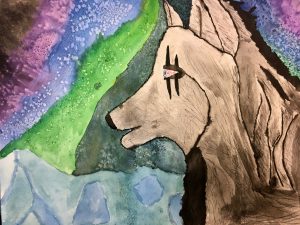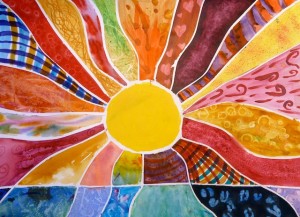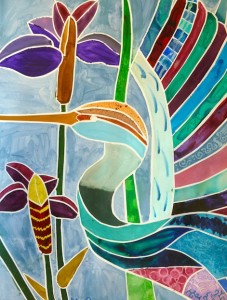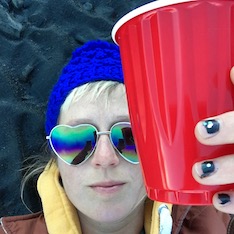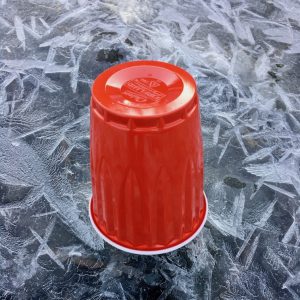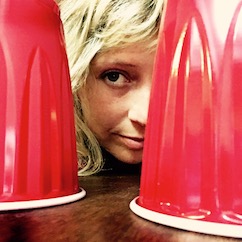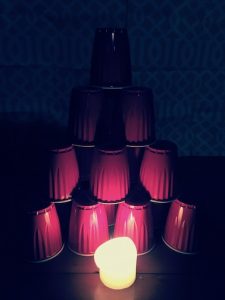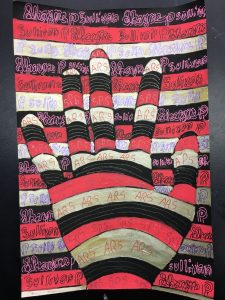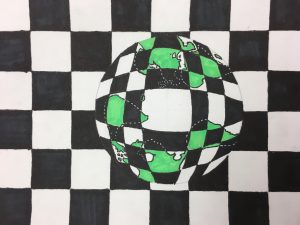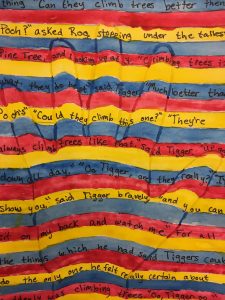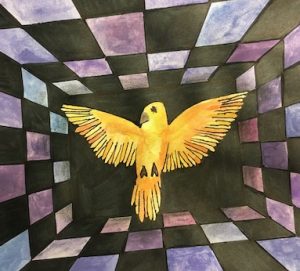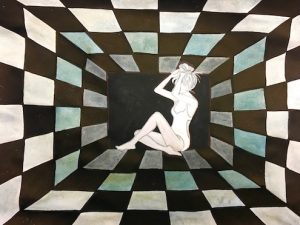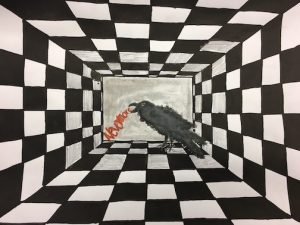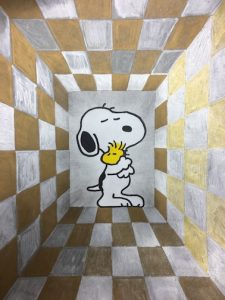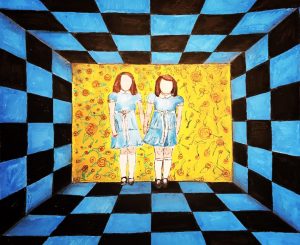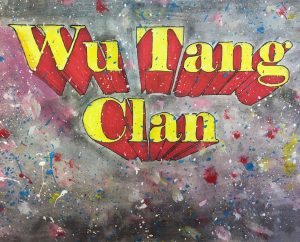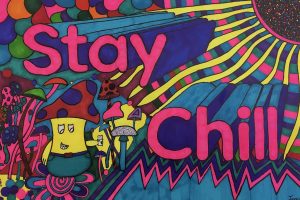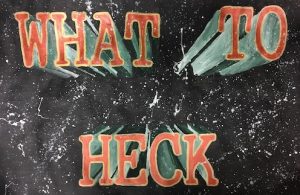March 9, 2017
Reflection Unit
SHS just finished oil pastel/chalk pieces focusing on reflections in water. They did great and here are a few!
Shayne Sullivan
Nathaniel Basalo
Sholanda Vert
Alex Ursel
Meghan Mullaly
Bjorn Nillson
Justin McMurray
Jazmine Jarnig
Eldon Zinis
Maddy Moore
Ally Chryss
Pattern Art

Nikki Farquarson’s work
SHS students studied the art of Nikki Farqharson, who combines collage work with intricate patterns. Here is some of their work emulating her style!
Laurel Correa
Hayley Unrein
Kyrsetn Johnson Grey
Tyler Goddard
Braden Lane
Shayne Sullivan
John Moriarty
Alex Ursel
Maddy Athey
Hunter Hollingsworth
Bjorn Nillson
Josh Parks
Meghan Mullaly
Eldin Zinis
Pricilla Stoltz
March 7, 2017
Alaska License Plate Assignment!
There is an accompanying planning sheet with this assignment. Fill it out as you read through the assignment for a grade.
- There is currently a call for art for Alaskan “Aristic License Plate” designs. Begin by reading this Alaska Dispatch Article about the contest. Next read the call for art.

Here is their example
2. Lets think about the subject matter of the art on your license plate design. This is an Alaskan License plate so it should celebrate our state! They suggest the topics of culture, wildlife, and geography. What comes to mind when you think about our Alaskan identity and way of life?
Here are my ideas to get the wheels turning in your brain, feel free to come up with your own!
Culture: indigenous cultures, subsistence culture (gathering berries, hunting, fishing), xtratufs, parkas, small planes, boats, winter sports, dog mushing, kayaking, gold mining, oil production…
Wildlife: salmon, moose, bear, mountain goats, dahl sheep, whales, sea lion, seal, eagle, mosquitos etc! Plants too: Fireweed, blueberries, salmonberries, devils club, lupine, forget-me-nots…
Geography: mountains, ocean, tundra, arctic, glaciers, volcanoes, rivers, lakes…Specific Mountains: Denali, Mt. Susitna, etc…
Note: You may not trace the art for this piece! It would be a copyright infringement! You may print a photo to look at as you draw!
3. Police use License Plates to identify specific vehicles so they need to be able to read them as easily as possible! You are required to use contrasting colors on your plate. Which numbers in the example below can you read the most easily?

Complementary Colors are across from each other on the color wheel and it is said they contrast. What do you think?
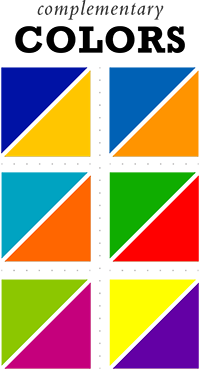
4. Another Rule they have is that the top 1 1/4 inch of the plate must say Alaska and the bottom 1 inch can say a slogan of your choice, for example THE LAST FRONTIER.
Now that you have all the information, fill out the planning sheet!
Here is some inspiration from license plates around the US:
March 6, 2017
SHS Ceramics
I have had some amazing Ceramic students at Seward High and Seward Middle School this past Quarter! Here are some of their projects!
Ancient Bas Relief Trivet:
Emma Moore
Makayla Dumars
Rachel O’Rourke
Textured Slab Built Vase/Bottle with Wheel Thrown Neck:
Tyler Goddard
Kendyl Morris
Makayla Dumars
Xavier Prince
Stephanie Ball
Chris Kingsland
Callie Tomlinson
Sarah Meinema
Riley von Borstel
Rachel O’Rourke
Heleana Backus
Ruby Lindquist
Sadie Lindquist
Kaylee Brockman
Billy Wolfe
Nicole Charlie
Emma Moore
Heleana Backus
Renee Elhard
Kylie Mullaly
Kinze Hauze
Chandler Marcus
Xavier Prince
Makayla Dumars
Shelby Siemenski
Emma Moore
Heleana Backus
Chris Kingsland
Riley von Borstel
Billy Wolfe
Dana Van Slyke
February 9, 2017
Seward Middle School Color Wheel Paintings
Seward Middle School students learned how to mix all 12 colors of the color wheel using just the primary colors: red, yellow, blue! Then they were given the assignment to come up with a composition which included all 12 colors! Here is what they came up with, great job!
Renee Elhard
Hailey Freiberg
Hana Cooney
Aiden Rodriguez
Ryan Brown
Leah Kava-Murdock
Paola Baez
Kylie Mullaly
Dilthini Dissanayake
Aaron Kuller
Ashton Simpson
Wren Dougherty
Shelby Sieminski
Cody Bryden
Seward High School Watercolor Paintings
Seward High students learned 12 different watercolor techniques, including using salt, rubbing alcohol, tissue paper, etc. Then they hand drew a person or animal and used this drawing to create a water color painting, utilizing at least 5 of these techniques as they chose. They did an amazing job! See if you can figure out what technique they used where!

Bekah Christenson’s Tupac drawing
Pricilla Stoltz
Dylan Dunning
Tyler Goddard
Clarence Longan
Bjorn Nilsson
Conor Spanos
Isaiah Bivens
Eliza Goddard
Hunter Hollingsorth
Elijah Gundersen
John Moriarty
Kyrsten Johnson-Grey
Dax Robinson
Lincoln Farris
Justin McMurray
Sholanda Vert
Laurel Correa
Allison Rogers
Linnea Hribernick
Alex Ursel
Chad Quinn
Sophi Dow
Josh Park
Madison Athey
Jaden Vandyke
Maddy Moore
Katelyn Correa
Clara LaRock
Nathaniel Basalo
Shayne Sullivan
Hayley Unrein
Ryan Miller
Jazmine Jarnig
Eldon Zinis
Gabe Wood
Ally Chryss
Megan Koster
Krisnan Weston
Coral Petrosius
Naomi Ifflander
Angela Tinker
Meghan Mullaly
January 17, 2017
Bas Relief Tile Texture Project
Bas Relief Textured Tile Project!
Cultures all around the world make BAS RELIEF meaning LOW RELIEF! This is 3-D art rising from a flat surface. A penny is an example of bas relief because part of the surface is raised!
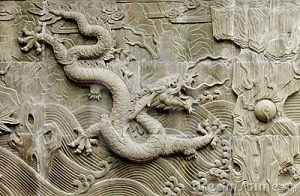
Here is a cool dragon in the bas relief style.
We are going to recreate ancient bas relief tiles to learn about texture and practice making it!
There is an accompanying video to this lesson here.
1. Roll slab of clay
2. Lay cardboard template on top and cut around it with pin tool.
3. Smooth your tile with your finger, a toothbrush, water
4. Cut out the ancient tile design you chose with scissors
5. Lay design on top of clay slab
6. Go over every line in the design with a pen
7. Lift paper/ Faint lines should appear in the clay where you traced!
Now is the time to add texture!
1. Incising – cutting the clay
a. Go over all lines with pin tool to make them more pronounced
b. Use small loop tools to cut wider lines or certain shapes out
2. Applique – Adding clay
a. Add clay to emphasize certain features!
b. Whenever you add clay, SCORE (make lots of scratches) the clay you are adding and where you are adding the clay, use water as well! Smooth
3. Stamping – press stamps into the clay
a. Create a pattern in the background with stamps! Mine is all random but you could make it even as well!
Next Class Period – hopefully your clay has firmed up some and is now leather hard!
If you have finished the 3 forms of texture on your piece now is the time to refine!
1. Brush off top with large dry brush (like an archeologist)
2. Smooth rough areas with a wet brush
3. Use a pin tool or loop tool to clean out rough or boogery areas
4. Gently flip it over. Smooth the backside with fingers, water, a toothbrush
5. Carve an inscription on the bottom, at the least you initials, at the most to so and so from so and so 2017…
At this point you can decide if you want your tile to be a trivet or a wall hanging!
Trivet – roll 4 small balls of clay of even size. Score and attach them to the 4 corners to act as little legs. Smooth.
Wall hanging – bore holes in each of the top corners. Twist as you push the bring tool through. Clean up holes.
When you are done and it is the best that it can be
January 16, 2017
Watercolor Sampler Project
We are beginning a watercolor unit. Our first project will cover the basic techniques in watercolor while making a cool piece of art. We are covering 12 techniques and here are examples of each:
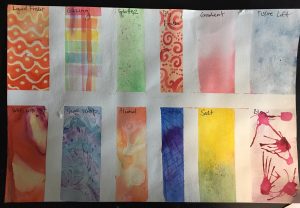
You need to begin by coming up with a composition which includes 12 shapes which are all about the same size. Here is my idea!
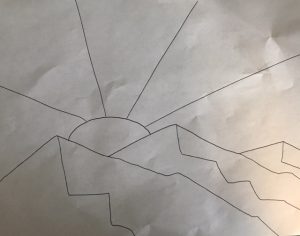
After you get your design approved, plan out where you will do each technique. You can plan colors and shading too!
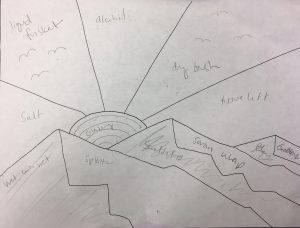
Next you need to tape out your design on watercolor paper. You need to make the masking tape tinner but cutting it into 1/2, 1/3 or 1/4 as thick using scissors or exacto knives. You may want to make some lines thicker and some thinner.

Before you begin painting make sure you have:
watercolor set
multiple brushes of different sizes
cup of clean water
toothpick
saran wrap
salt
alcohol
liquid frisket
kleenex
2 straws
Here is my video tutorial on how to do all of the watercolor techniques. Please follow along, and pause or rewind if necessary!
Here are the tehniques in the order I cover them:
Watercolor Techniques
Liquid Frisket
Glazing first layer
Underlayer for:
Splatter
Dry Brush
Blow
Wet onto wet
Salt
Scrafito
Graded
Saran wrap
Tissue lift
Alcohol
After First Layer is Dry Revisit and Finish:
Liquid Frisket Background
Splatter
Dry Brush
Blow
Glazing Second Layer
Here is my finished product and some from the past:
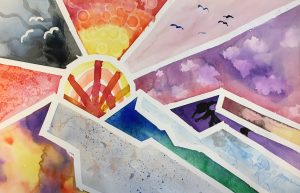
BWaggoner
January 9, 2017
Red Cup Elements and Principles of Design
The ELEMENTS of Design (the tools to make art)

Line (a point moving through space)
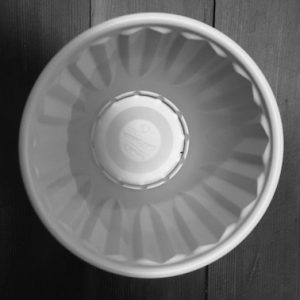
Shape (two dimensional geometric or organic shapes)
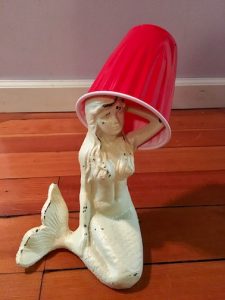
Form (three dimensional forms)

Space (perspective – close vs far)
The PRINCIPLES of Design (how to use the tools to make art)
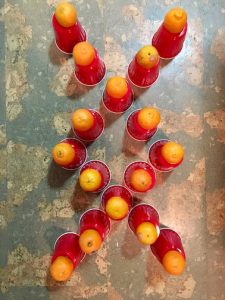
Pattern (regular arrangement of repeated elements)
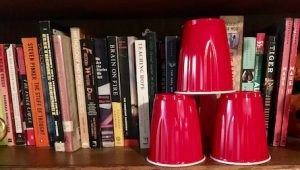
Contrast (juxtaposing two different things to create interest)
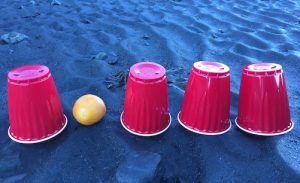
Emphasis (the artist wants your eye to be drawn to this area – focal point)
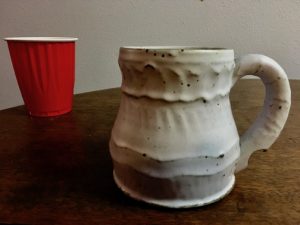
Balance (symmetrical or asymmetrical visual balance)
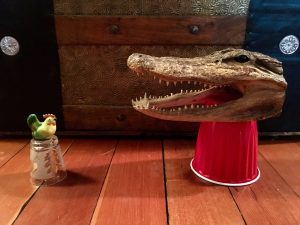
Proportion/Scale (differences in size)
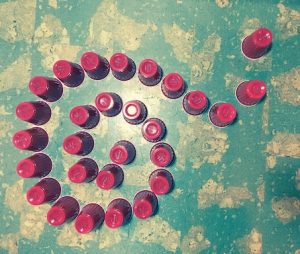
Harmony (all the parts of the piece create a pleasing whole)
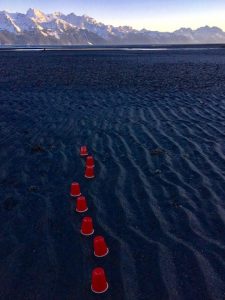
Rhythm/Movement (recurring elements to direct the movement of the eye)
December 21, 2016
Illusions with lines
To end the year, we did a variety of small projects involving optical illusions using lines and rulers! We started with the 3-D hand or sphere illusion, then did a one point perspective room, and ended with 3-D one point perspective letters! Here are just a few of them!
Shayne Sullivan
Case Estes
Ayla Lapanskas
Gabby Keeter
Sarah Meinema
Ruby Lindquist
Elena Hamner
Maddy Moore
Emma Moore
Heleana Backus
Sarah Meinema
Ryan Miller
Jazmine Jarnig
Heleana Backus
Emma Moore
Kaylee Brockman
Zen Petrosius
